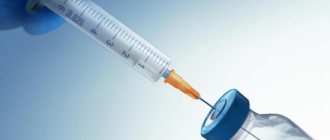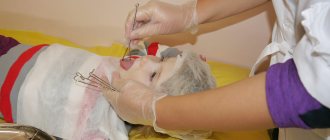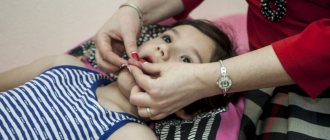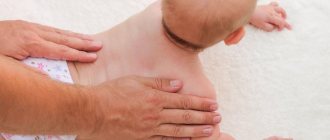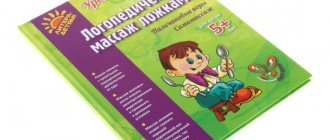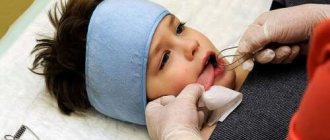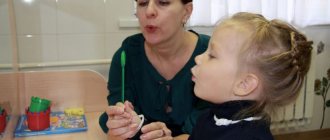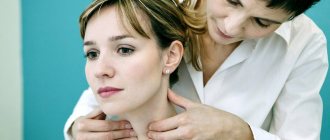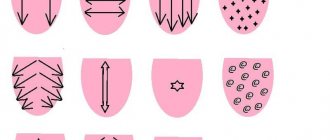Massage method in the correction of speech disorders
Indications for the use of massage
Speech therapy massage is an active method of mechanical action that changes the condition of muscles, nerves, blood vessels and tissues of the peripheral speech apparatus (techniques and methods of speech therapy massage are taken from the book by E.A. Dyakova). Speech therapy massage is part of a comprehensive medical and pedagogical system of rehabilitation of children, adolescents and adults suffering from speech disorders. Massage is used by those diagnosed with speech disorders such as dysarthria, including its minimal manifestations: rhinolalia, stuttering, voice disturbance, as well as for the prevention of speech disorders in children of the pre-speech period of development who have various types of motor disorders.
The main goals of speech therapy massage:
- Normalization of muscle tone of general, facial and articulatory muscles;
- reducing the manifestation of paresis and paralysis of the muscles of the articulatory apparatus;
- reduction of pathological motor manifestations of the muscles of the speech apparatus (syncinesia, hyperkinesis, convulsions, etc.);
- stimulation of proprioceptive (body sense, posture, movement) sensations;
- increasing the volume and amplitude of articulatory movements;
- activation of those muscle groups of the peripheral speech apparatus that had insufficient contractile activity;
- the formation of voluntary, coordinated movements of the organs of articulation.
Brief anatomical and physiological information:
Speech therapy massage is performed mainly in the area of the muscles of the head, neck, and shoulder girdle. Particular attention in the process of speech therapy massage is paid to the muscles of the peripheral speech apparatus, which include the muscles of the tongue, lips, cheeks, and soft palate. The speech therapist must have a good understanding of the structure and functions of the muscles in the area of which speech therapy massage will be performed. .
Indications for use
Massage for speech development has clear indications for:
- all types of stuttering;
- various speech defects (aphasia, dyslalia, bradyllia);
- loss of voice (partial);
- minor voice disturbances;
- uncontrolled salivation;
- Cerebral palsy (cerebral palsy);
- pronunciation pathology caused by severe tension in the facial muscles;
- hypertonicity of the facial muscles;
- problems with the development of articulatory muscles;
- dysarthria (limited mobility of the tongue, palate, lips).
Indications for speech therapy massage are determined by the doctor. The baby's parents are given a referral to visit a massage therapist or speech therapist at a children's medical facility. If parents do not want to visit a government specialist, they can turn to a private one. In this case, it is definitely worth checking his qualifications (diplomas and certificates).
PRELIMINARY DIAGNOSTICS
The appointment of speech therapy massage should be preceded by a medical diagnosis carried out by a doctor. The medical report contains an indication of the presence of neurological symptoms, including an indication of the form of paresis (or paralysis), local disorders of muscle innervation, etc. As a rule, speech therapy massage is recommended only on the recommendation of a doctor. Before starting correctional work, the speech therapist must determine the form and structure of the speech defect, guided by the clinical and pedagogical classification, and then raise the question of the need for massage. As a rule, the main indication for massage is a change in muscle tone, which can be observed both in the general muscles and in the organs of the speech apparatus. However, even with a medical report, the speech therapist must independently diagnose the condition of the muscles. This will help him determine massage tactics in each specific case. The speech therapist should determine the condition of the muscles: the upper half of the torso, neck, facial expression, articulation. This is established by inspection, palpation, and observation when performing dynamic and static exercises.
Inspection. When examining a child, you should pay attention to the position of the head in relation to the body, and note whether there are any habitual asymmetrical postures. When examining the face, one must remember about possible asymmetry in the form of a smoothed nasolabial fold, drooping corner of the mouth, widened or narrowed palpebral fissure, as well as the presence of a constantly slightly open mouth, drooling (this is important). Skin coloration, skin rashes, skin hemorrhages.
Palpation. Palpation of the muscles involved in articulation allows the speech therapist to more accurately determine the nature of muscle tone disorders. The following characteristics are determined by palpation. Skin elasticity, skin swelling, condition of lymph nodes, condition of muscles.
Types of massage used in speech therapy practice
Several types of massage can be used in speech therapy practice. The main thing is differentiated (strengthening or relaxing) massage, based on the techniques of classical (manual) massage. In addition, speech therapy practice uses massage of biologically active points (BAP), massage using special devices (speech therapy probe, spatula, vibrating massager, cupping, etc.), as well as elements of self-massage.
Contraindications for massage
Contraindications for massage are any somatic or infectious disease in the acute period, conjunctivitis, acute and chronic skin diseases, gingivitis, stomatitis, the presence of herpes on the lips or other infections of the oral cavity, the presence of enlarged lymph glands, pronounced pulsation of the carotid arteries. Before conducting a massage course, it is necessary to obtain a conclusion from a neurologist and pediatrician about the absence of contraindications.
Preparing for a massage
To carry out a massage, the speech therapist must have the following materials: 1) medical alcohol (for disinfecting probes, spatulas. 2) sterile napkins 30 x 30 cm (for examining the state of muscle tone of the articulatory apparatus), 3) hexoral (after massaging the muscles of the oral cavity, the child can for hygiene purposes, rinse your mouth with the solution), 4) sterile medical rubber gloves (can be used when performing massage in the oral cavity), 5) ammonia and 3 percent hydrogen peroxide (can be used if necessary to provide emergency care), 6) protective mask (use it is advisable to avoid droplet infection). The skin of the person being massaged should be clean, the hands of the speech therapist should be clean and warm, without abrasions or scratches or any areas of inflammation, with short-cut nails, without jewelry that would interfere with the massage. Before massaging your face or neck, you can lightly lubricate your hands with baby oil or use baby powder. When massaging the muscles of the oral cavity, it is recommended to use sterile medical rubber gloves or sterile napkins.
General recommendations for massage.
Speech therapy massage is carried out in a clean, comfortable, warm and well-ventilated room. On average, two or three procedures per week, performed in a row or every other day, may be sufficient. Typically, massage is carried out in a cycle of 10 - 20 procedures. These cycles can be repeated at intervals of two weeks to two months. In case of severe disorders of muscle tone, massage can be carried out for a year or more. The duration of one procedure may vary depending on the degree of damage, the age of the patient, etc. The initial duration of the procedure is usually 5 - 7 minutes, and the final duration is 20 - 25 minutes.
Body positions during massage.
Before starting the procedure, the child must take the correct position - a resting position. Adopting the correct posture helps relax muscles, makes breathing free, and also provides a comfortable position for the speech therapist when performing a massage.
The following body positions are optimal for speech therapy massage: 1. The person being massaged lies on his back, arms extended along the body, legs lying freely, socks slightly apart. Under the head is a small flat pillow that reaches the upper edge of the shoulder blades. The speech therapist takes a position behind the patient's head. 2. Pose - half-sitting in a chair with a high headrest. The speech therapist takes a position behind the patient's head.
BASIC MASSAGE TECHNIQUES.
- Stroking: superficial; deep grasping; rake-shaped.
- Trituration.
- Kneading.
- Vibration and effleurage.
- Firm pressure
Stroking. This is a mandatory technique with which every procedure begins. It is alternated with other techniques and ends each massage complex.
Trituration. This technique is carried out, as a rule, in small, limited areas (the subcutaneous fat tissue is slightly shifted into the fold).
Kneading . This technique is performed in the same way as rubbing, in the area of individual muscle groups, maximally activating muscle function. It consists of grasping, sliding, pulling, squeezing, squeezing, pinching and rubbing tissue.
Vibration and effleurage . Vibration changes interstitial metabolism and improves tissue condition. Strong, hard vibration increases muscle tone, and light, weak vibration reduces their tone.
Press firmly . As a rule, this technique, which improves blood circulation, lymph circulation, and metabolic processes, is used at the exit points of bundles of nerve endings.
Guidelines for conducting a relaxing massage.
- The massage is performed at a slow pace.
- The main techniques are stroking and light vibration.
- A relaxing massage should cause only pleasant feelings of warmth and peace in the child.
- The speech therapist's hands must be warm.
- Muscle relaxation is facilitated by the sound of quiet music with a slow, smooth rhythm or by the speech therapist performing the massage pronouncing calm formulas for autogenic training.
- To enhance the relaxing effect, a warm compress can be placed on the face of a teenager or adult a few minutes before the massage. This can be a terry towel soaked in warm water (40-45°C) and wrung out well. The compress is applied for 3 - 5 minutes.
- The sequence of effects on the massaged areas during one relaxing massage session can be as follows:
- muscles of the neck and shoulder girdle,
- facial muscles,
- lip muscles,
- muscles of the tongue.
Methodological instructions for carrying out activating massage.
- This type of massage is used for decreased muscle tone.
- The speech therapist's hand movements should be quite rhythmic.
- The main technique is stroking, which alternates with rubbing, kneading, and strong vibration.
- The force on the massaged tissues should increase gradually.
- Vigorous effects are contraindicated on the front surface of the neck, since the thyroid gland is located in this area.
- When the massage is performed correctly, the baby's breathing is even.
- The massage should not cause significant pain in the person being massaged.
- The sequence of effects on the massaged areas during one strengthening massage session can be as follows:
- facial muscles,
- lip muscles,
- tongue muscles,
- muscles of the neck and shoulder girdle.
Conditions for holding
Speech therapy massage for children, as a rule, begins at the age of 4–5 years. According to indications, the course can be started earlier.
You need to create favorable conditions at home so that the sessions do not bring discomfort. The room should be quiet, warm and light. The massager's hands should be warm and clean. Make sure there are no scratches, inflammation, or foreign odors on your hand—perfume, aromatic oils, creams. Remove all jewelry. It is also necessary that the child is disposed to treatment and treats it calmly. It is unacceptable for the baby to cry and struggle.
The first speech therapy massage procedure for children can be short - no more than 5 minutes, especially if this is the first time for him. Then gradually increase the duration: after a week you can practice for 20–30 minutes. Focus on the age and reaction of the baby: if he becomes uncomfortable, uncomfortable, fear or nervous tension appears, it is better to interrupt the session. If you continue, despite the protest, next time he may refuse treatment altogether.
For good results, you need to practice regularly. Optimally 2 – 3 procedures per week. If you combine them with articulatory gymnastics and other activities, you will see the effect faster. Try not to take long breaks between sessions.
On average, a full course requires 10–20 sessions, sometimes more.
For massage you need to prepare a special oil or cream. Be sure to check for tolerance: apply a small amount of the product to the skin of your forearm and evaluate the reaction.
After treatment, wash your baby's face and rinse his mouth.
SHOULDER AND NECK MASSAGE
Relaxing massage. Relaxation of the muscles of the shoulder girdle and neck expands the physiological capabilities of the respiratory apparatus, while the tone of the root of the tongue reflexively decreases, which helps to intensify movements of the lower jaw. The person being massaged should be naked up to half the chest.
- Slowly stroke the front of the neck with the palms of both hands (alternately with the right and then with the left hand) from top to bottom along the side areas of the throat (avoid pressing on the thyroid gland area)
- Slowly stroke the side of the neck, alternately on the right and then on the left.
- Place both hands on the back of the neck, towards the back of the head, this massage technique relieves tone from the trapezius muscle.
Invigorating massage. Massage movements are performed in the direction from bottom to top, using stroking and rubbing techniques. Tapping, kneading and vibration of these sections are contraindicated. 1. The movement is carried out simultaneously or alternately with both hands, up the side surface of the neck to the corners of the lower jaw. 2. The movement begins from the area of the shoulder blades along the posterolateral surface of the neck up to the back of the head.
Forehead massage
Relaxing massage.
- Stroking movements with the palmar surface of all fingers (except the thumb) in the direction:
- from the middle of the forehead to the temporal areas. Circular stroking in the form of a spiral is carried out on the temples
- from the middle of the forehead to the tragus of the auricle, ending with light pressure
- Stroking in the direction from bottom to top, from the brow ridges to the scalp. The movements are carried out alternately by the palmar surface of all fingers of the right and left hands or simultaneously by the pads of the 2nd–4th fingers of both hands.
Invigorating massage.
- Rubbing, i.e. semicircular or spiral movements in the direction from the midline of the forehead to the temples.
- Kneading, squeezing a fold of skin with two fingers - thumb and forefinger, or intermittent pressure.
- Intermittent vibration, or puncturing (tapping), with the pads of the index and middle fingers alternately at a fast pace.
Massage in the eye area
The massage affects the orbicularis oculi muscle and the corrugator muscle. The massage is performed with eyes closed. Massage movements in the area of the eye sockets should be very gentle, carried out without much pressure or moving the skin.
- Stroking with the pads of the middle fingers of both hands. Movement from the temporal fossa along the lower edge of the eye to the inner corner of the eye; then up to the eyebrow and then stroking is carried out with the index and middle fingers along the eyebrow to the temple; in this case, the middle finger lies under the eyebrow, and the index finger above the eyebrow
- Stroking the orbicularis oculi muscles. Using the pads of the fourth fingers of both hands, they simultaneously stroke from the temple along the lower eyelid to the inner corner of the eye. Then they smoothly move to the upper eyelid and stroke it very lightly, without pressing on the eyeball.
Why should you use my services?
I offer children's professional massage. Thousands of parents have used the service over the years of my activity and were satisfied with the results. I leave at a time convenient for the customer. I offer consultations with an experienced specialist. I am ready to answer the client’s questions. You can call me at the phone number listed on the website. You can submit a request for a service in real time. You must fill out a special order form. I will definitely call you back as soon as possible. New and regular customers are always welcome!
Massage in the cheeks and chin area
The massage affects the zygomatic, cheek, chewing, and chin muscles, as well as the muscles that change the position of the lips (the laughter muscle, the levator anguli oris muscle, the depressor anguli oris muscle, the depressor of the lower lip muscle). Particularly important is the effect on the masticatory, pterygoid and temporal muscles, since the quality of movement of the lower jaw, the position of the mouth at rest, and the function of chewing depend on their condition.
Relaxing massage.
- The index fingers of both hands are located under the lower lip, and the rest are under the chin.
- The index fingers of both hands are located above the upper lip, the middle fingers under the lower lip, and the rest under the chin.
- Movement of all fingers (except the thumb) starts from the back of the nose, passes through the zygomatic arch to the auricles, fixing the fingers in the recesses at the tragus and earlobe.
- The movement is carried out with three fingers (index, middle, ring) of both hands from the midline of the forehead down through the temporal cavities to the middle of the chin.
Invigorating massage.
- Circular rubbing in the cheek area is carried out with the dorsal surface of the terminal and middle phalanges of the four fingers in the direction from the edge of the lower jaw to the edge of the zygomatic bone.
- In a similar way, circular rubbing is carried out from the middle of the chin up to the wings of the nose.
- In the area of the masticatory muscle, kneading is performed with spiral movements and circular rubbing.
- The back surface of the middle phalanges, clenched into a fist, shakes the cheeks both longitudinally and transversely.
The essence of the procedure
Buccal massage is a unique way to influence facial muscles. During the process, the massage therapist carries out a thorough and deep study of the cheek area from the inside and outside.
The work is aimed at the chewing and facial muscles, resulting in:
- blood microcirculation improves;
- facial muscles are strengthened;
- facial skin, its elasticity and strength of muscle fibers are restored.
Some patients experience pain during the session, especially the first few times, this is considered normal.
Massage of the inner cheek
Massage of the chewing, cheek and zygomatic muscles, and especially the pterygoid muscles, can be carried out with the speech therapist’s fingers positioned inside the child’s mouth. When massaging the left cheek, the speech therapist places the thumb of the right hand in the mouth, the remaining fingers remain outside. Massage movements are carried out with the thumb on the inner surface, and with the remaining fingers on the outer surface of the cheek. When massaging the right cheek, the index and middle fingers are inserted into the oral cavity, the thumb is on the outer surface of the cheek, performing the basic massage movements. Massage of the inner surface of the cheek can be carried out in different positions of the mouth: open and wide open - and with the jaws closed. The main techniques used are rubbing and kneading.
- Circular movements along the cheek from the periphery to the center and vice versa.
- Spiral rubbing and kneading with fingertips in a circle.
- Kneading in a circular motion and rubbing in the area of the masticatory muscle.
- Rubbing movements from the cheekbone down to the corner of the mouth. All fingers, except the thumb, are located at the edge of the zygomatic bone. Thumb - on the inside of the cheek.
- Rubbing spiral movements. All fingers, except the thumb, are located in the area of the tragus and earlobe, gradually moving towards the corner of the mouth.
- Spiral rubbing of the temporomandibular (zygomatic) joint area. In the open mouth position, find the “hole” at the earlobe. Massage the pit area with your index and middle fingers. The thumb serves as a support on the inside of the cheek.
Contraindications
Speech therapy massage can only be performed if the child is in good general condition. It is contraindicated for:
- viral diseases that are accompanied by fever, cough, runny nose;
- stomatitis, gingivitis, sore throat and other diseases of the oral cavity;
- skin diseases - herpes, chicken pox, allergic rash;
- any diseases and conditions in which the baby’s well-being is impaired - teething or loss of baby teeth, fatigue;
- episyndrome;
- severe mental disorders.
In these conditions, it is better to wait with massage or abandon it completely. If a child suffers from colds or has an inflammatory process in his mucous membranes, you need to consult a doctor so that you can be prescribed treatment. Speech correction can begin after the condition has normalized.
Lip muscle massage
Relaxing massage.
- Using the palmar surface of the index fingers, make stroking movements along the upper lip from the corners of the mouth to the middle.
- The same movements are made along the lower lip from the corners of the mouth to the middle.
- The movement is performed with the pads of the index and middle fingers alternately with the right and left hands. The movement begins from the tragus of the auricle, the fingers easily slide along the cheek and then around the lips. In this case, the index finger slides over the skin of the upper lip, and the middle finger over the skin of the lower lip, coming together at the opposite corner of the mouth.
- Using the pads of the index and middle fingers, stroke the nasolabial folds, moving from the wings of the nose to the corners of the mouth.
- With the same fingers, lightly tap around the lips in a clockwise direction. Massage movements can be carried out with the mouth in different positions: closed and slightly open.
Invigorating massage . Rubbing techniques are used in the form of semicircular and spiral movements, kneading in the form of rubbing and vibration.
- The palmar surface of the index fingers makes movements along the upper lip from the middle to the corners of the mouth. The same movements are used on the lower lip.
- With the thumbs of both hands, make movements from the middle of the upper lip to the corners of the mouth and slightly down, and then with the index fingers - from the middle of the lower lip to the corners of the mouth and slightly up. The movements alternate.
- Stroke the nasolabial folds, moving from the corners of the lips to the wings of the nose.
- Using your thumb and forefinger, grab your upper lip into a vertical fold, squeeze it and rub it between your fingers. The capture is carried out in the central part of the lip.
- Use your thumb and forefinger to grab the skin around your lips and perform a pinching technique.
- The ends of the index and middle fingers are tapped intensively around the lips.
- Rubbing movements carried out by the thumb and forefinger in the direction from one corner of the mouth to the other along the upper and then lower lip.
- Spiral movements made with the thumb and forefinger along the upper and then lower lip.
- Spiral kneading of the nasolabial fold area. The phalanx of the thumb is located in the oral cavity under the nasolabial fold, the index and middle fingers are located on top.
- Point squeezing of the lip between the thumb and index finger. Localization of points.
- The speech therapist places his index fingers on a point located between the middle of the upper lip and the corner of the mouth on both sides. A movement is made towards the middle so that the upper lip is gathered into a vertical fold. A similar movement is carried out on the lower lip.
- The specialist places the index and middle fingers near the corners of the mouth and slightly stretches the lips, as if smiling; with a reverse movement, the lips return to their original position. Movements are light and smooth. These exercises can be performed with the mouth closed or open.
Advantages of the procedure
All women who have tried this type of massage note the following benefits:
- small facial wrinkles disappear, and deep ones become more invisible;
- cheeks decrease in size,
- the facial contour becomes more toned;
- the problem of drooping corners of the lips is eliminated;
- the skin on the face becomes more elastic and acquires a healthy shade;
- facial muscles are tightened;
- the nasolabial fold disappears;
- the problem of muscle atrophy after a stroke is solved.
Tongue muscle massage
Violation of muscle tone is always more pronounced in the muscles of the tongue. Increased tone of the tongue muscles is observed much more often than decreased tone. There may also be cases of uneven distribution of muscle tone in the muscles of the tongue; for example, tone can be reduced only in an isolated group of muscles (one half of the tongue, root, tip, etc.). Massage of the lingual muscles, which have a complex structure and produce subtle, precise movements during the process of articulation, is the most complex procedure. In addition, performing massage movements on the tongue, as a rule, causes discomfort in the person being massaged. One should also take into account the fact that the tongue is a rather intimate part of the human body. Massage of the tongue muscles requires the speech therapist to have extreme precision of movements, accuracy and a certain correctness. When performing a massage, the following guidelines should be taken into account: differentiated massage of the tongue muscles is carried out either with rubber gloves, or through a gauze cloth, or through a sterile cambric handkerchief; When massaging the tongue, various devices can be used: probes, spatulas, toothbrushes, etc.; To do this, the speech therapist pulls the tongue forward as follows: grabs the tip of the tongue (through a handkerchief or gauze) so that the thumb is on top, the index and middle fingers are on the bottom, and slightly pulls it forward. The tongue is grasped with the left hand, and massage movements are carried out with the right. massage movements should be carried out in three directions, according to the location of the tongue muscles: horizontal, transverse and vertical.
Relaxing massage.
The most difficult is a relaxing tongue massage. With increased tone, it is difficult to keep the tongue out of the mouth; the velopharyngeal (gag) reflex can also make massage difficult. In this regard, when carrying out a relaxing massage of the tongue, it is necessary to strictly follow a number of rules: relax the muscles of the tongue only after relaxing other muscles, especially the muscles of the neck, shoulder girdle and muscles that provide movement of the lower jaw, since these muscles are closely related to the muscles of the tongue, especially its root; movements in a relaxing massage are mainly directed from the tip to the root of the tongue; Before the massage begins, the “border” of the velopharyngeal reflex is established. To do this, you need to gradually touch the surface of the tongue with a spatula, moving along the midline from the very tip towards the root of the tongue. The location that is associated with the appearance of the gag reflex is considered the “border” of the gag reflex. With increased tone, the “border” of the gag reflex can approach the middle part of the tongue, and in severe cases even to its tip. In these cases, the massage should be performed extremely carefully, gradually going beyond the “border” of the gag reflex; if, due to severe spasticity of the muscles, especially the root of the tongue, it is not possible to keep the tongue outside the oral cavity, tongue massage begins inside the oral cavity. Gradually, as muscle tone normalizes, the tongue is moved to a position outside the oral cavity; Before a relaxing massage of the tongue muscles, it is advisable to carry out special exercises to help relax its root: use your index finger or thumb to make light vibrating movements in the area of the submandibular fossa.
After this, they move on to the actual massage of the tongue muscles.
- Using the thumb and forefinger of the right hand, make stroking movements on one side, then on the other side of the tongue, from the tip to the root of the tongue and back. In this case, the index finger is under the tongue and serves as a support.
- Make stroking movements with the thumb and forefinger from side to side (from the midline to the side of the tongue and back), gradually moving from the tip to the root. The movements are performed first on one half of the tongue, and then on the other.
- The thumb and index fingers are on the lateral surfaces of the tongue - right and left. Stroke the side surfaces of the tongue from tip to root.
- Lightly knead the muscles in a horizontal direction. The thumb of the right hand is on top, the middle and index fingers are on the bottom of the tongue. Rubbing movements are carried out with gradual advancement from the tip of the tongue to the root and back, first on one side of the tongue and then on the other. The movements are very light without pressure.
- With the same position of the fingers, make circular rubbing movements easily, without pressure.
- Grasping the tip of the tongue with your right hand, lightly shake it.
- Apply light tapping of the tongue and light rhythmic pressure with a spatula (wooden or plastic).
- The thumb is on top, the middle and index fingers are on the bottom of the tongue, in its middle part, turn the tongue to the right and pull it slightly, as if slightly pulling the root part of the tongue outward. Then a similar movement to the left.
Invigorating massage.
When performing an activating (strengthening) massage, you should pay attention to the following points: movements during a strengthening massage are active, intense and directed mainly from the root of the tongue to the tip; the techniques of kneading and grinding are mainly used; as a rule, with reduced muscle tone of the tongue, the gag reflex is also reduced, so massage movements in this case can be quite active even in the area of the root of the tongue; if a decrease in muscle tone is observed only in some part of the tongue (for example, only on one half of the tongue), massage movements are performed mainly on the affected side; with reduced muscle tone, as a rule, hypersalivation (increased salivation) is observed, therefore, before performing the massage and during the massage, the speech therapist suggests that the child swallow saliva.
An energizing massage may include the following movements.
- Grinding in the longitudinal direction. Thumb on top, middle and index finger on bottom. Rubbing the muscles of the tongue from root to tip on one side of the tongue, then on the other.
- The position of the fingers is the same. Rubbing the tongue muscles with spiral movements, the pressure gradually increases. The movement is directed from the root to the tip of the tongue on one side, then on the other.
- The position of the fingers is the same. Rubbing the muscles of the tongue in a transverse direction on one side of the tongue, then on the other.
- The thumb and index fingers are on the sides of the tongue. Squeeze the tongue from the sides. Hold your tongue in a compressed position for 1 - 2 seconds, move your fingers a little and repeat the movement.
- The position of the fingers is the same. With your right hand, squeeze the tongue from the side surfaces, and with your thumb and forefinger, carry out rubbing movements, gradually moving from the root to the tip of the tongue.
- Using your thumb and index finger, make pinching movements along the edge of the tongue.
- Patting the muscles of the tongue with a spatula (or the grooved surface of a handle or toothbrush).
- Vibrate the tongue using a wooden spatula, which is applied to the tip of the tongue for 10-15 s. You can place a gauze roller on the child’s lower teeth to avoid damaging the mucous membrane of the lower surface of the tongue.
Why do you need speech therapy massage?
Speech therapy massage allows you to relax or strengthen articulatory muscles and stimulate muscle sensitivity. The indication for the procedure is the presence of the following problems in the child:
- a short hyoid frenulum is one of the causes of dyslalia - speech disorders in which there is no damage to the central nervous system and the organ of hearing, so the main work is done with the articulatory apparatus;
- rhinolalia - a violation of sound pronunciation due to pathology of the nasal cavity and oropharynx;
- involuntary salivation, one of the reasons for which is loss of tongue muscle tone;
- voice disorder - the baby speaks quietly, but he may have a feeling of “coma” and heaviness when speaking;
- alalia - absence or underdevelopment of speech, caused by damage to the speech centers of the brain;
- dysgraphia - a violation of written speech;
- violation of muscle tone, both upward and downward, which are involved in sound pronunciation;
- stuttering of a neurotic nature;
- slurred speech.
Soft palate massage
The massage is aimed at activating the tone of the soft palate and increasing the palatopharyngeal reflex. The main indication for massaging the muscles of the soft palate is the nasal tone of the voice. These movements are used only when the muscle tone of the soft palate is reduced. General recommendations for massage are as follows: the massage effect is usually directed not only to the muscles of the soft palate, but also to the lingual-palatine and pharyngeal-palatal arches; massage must be combined with passive and active gymnastics aimed at stimulating the palatine and pharyngeal muscles; massage movements are performed with the thumb or index finger of the right hand. Massage of the soft palate may include the following movements.
- Perform stroking, rubbing, kneading and screwing movements in the direction from the hard palate over the entire surface of the soft palate.
- Stroking, kneading and rubbing movements from right to left, grasping the lingual-palatal arches.
- Pressing movements made by the thumb or index finger over the entire surface of the soft palate in the longitudinal and transverse directions.
- The child pronounces the sound a or e for a long time. At this time, use your thumb or index finger to make rubbing and kneading spiral movements in the transverse and longitudinal directions.
- The child pronounces the sounds a or e briefly, abruptly, using a firm sound attack. At this time, perform jerking movements with the thumb in the area of the soft palate and palato-lingual arches. IN
postoperative period for rhinolalia, massaging movements should be carried out extremely carefully (only after the doctor’s permission) in two directions: longitudinally, along the line of the surgical suture, and transversely, along the border of the hard and soft palate. The movements at the beginning of the course of postoperative massage should be very light, stroking, and only gradually should one move on to kneading and pressing movements. It is very important to combine an activating massage of the soft palate with active and passive-active exercises aimed at reflex contraction of the muscles of the soft palate, muscles of the pharynx and muscles of the posterior pharyngeal wall.
Passive and passive-active exercises that stimulate the work of the velopharyngeal muscles.
Using a spatula, which touches the root of the tongue, induce a reflex contraction of the muscles of the back wall of the pharynx and soft palate. Imitate chewing. Drink water in small sips or imitate swallowing movements (successive repeated swallowing movements lead to an increase in the time during which the soft palate is in a raised position). Coughing - this movement is performed repeatedly on one exhalation (leads to complete closure of the velopharyngeal ring). Yawning is a movement imitated by the child following the speech therapist. Repeatedly pronounce the vowels a, e with a firm voice attack. Gargle with small portions of warm water.
Main goals
The main tasks of speech therapy massage include:
- sound pronunciation correction;
- improvement of voice condition;
- normalization of speech breathing;
- elimination of emotional stress in persons with speech defects;
- treatment of problems of stuttering, rhinolalia, voice disorders, dysarthria;
- improving the tone of the muscles of the oral cavity and vocal apparatus;
- development and activation of the peripheral speech apparatus;
- reduction of hypersalivation;
- strengthening the pharyngeal reflex;
- increased proprioceptive sensations;
- creating the prerequisites for voluntary coordinated movements of the organs of articulation.
Tongue frenulum massage
If the frenulum of the tongue is shortened, massage movements are used to help stretch it. Using the thumb and index finger of your left hand, grasp the tip of your tongue and lift it up. The mouth is open. Using the index finger and thumb of your right hand, use a stretching motion to slide along the frenulum of the tongue from bottom to top.
Massage of the mucous membrane of the gums and hard palate In some cases, in addition to muscle tone disorders, a child may experience weakness of kinesthetic sensations. In such cases, in order to overcome articulatory praxis disorders, the complex of massage movements includes massage of the mucous membrane of the hard palate and gums.
- The child's mouth is open. The thumb is located on the outer side of the upper gum, and the index finger is on the inner side. Pressing vigorously on the gums, make movements from right to left, and then from left to right, first along the upper, and then in the same way along the lower gum (Fig. 102).
- Using your thumb or index finger, vigorously move along the hard palate, starting from the upper front teeth, towards the soft palate to the border with the soft palate and back.
LITERATURE.
- Dyakova E.A. Speech therapy technologies Speech therapy massage: textbook. aid for students Ed. Center "Academy" issue-6
- Ogloblina I.Yu., Tantsyura S.Yu. Speech therapy massage: games and exercises.
- Prikhodko O. G. Features of speech therapy work for dysarthria with children suffering from cerebral palsy and other types of neurological pathology // Development and correction. - 1999. - Issue. 5.
- Serbina A.F., Voloskova N.N. A set of techniques for massaging speech and facial muscles for dysarthria. Dysarthria, clinical, neurolinguistic, psychological and pedagogical aspects of the problem: Educational and methodological manual. — Stavropol, 1996
Matsuk Tatyana Viktorovna teacher-speech therapist, Novobiryusinsk kindergarten “Fairy Tale”, Novobiryusinsk settlement
Types of speech therapy massage
There are several types of speech therapy massage for children:
- Manual, or classic, is performed with hands, affecting various zones;
- The hardware is carried out using special instruments and devices, probes; at home you can replace them with a spoon;
- Point implies action on certain points;
- Self-massage, which the child performs independently with gymnastics.
Mom can perform a regular manual massage. Other types should only be performed by a specialist.
